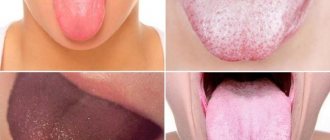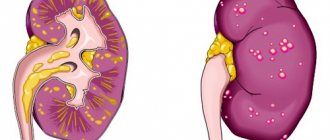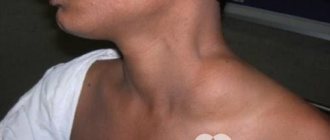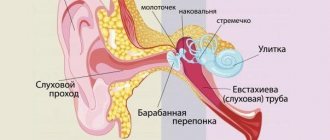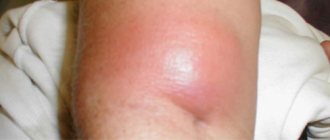Inflammatory pathology of the salivary gland or sialadenitis is often a viral disease, which is accompanied by swelling, pain, hyposalivation, and deterioration in general well-being. Possible complications may include abscesses, ulcers and stones. Infectious inflammation of the salivary gland requires complex treatment with the use of antibacterial and restorative drugs.
A mandatory measure in case of complicated pathology will be surgical removal of stones and cleansing of pus. When the first symptoms of pathology appear, it is important to know which doctor to contact, what to do at home, and what antibiotics to take. First of all, the cause of the disease is established in order to eliminate its provoking factors before curing the pathology.
What is inflammation of the salivary glands called?
Inflammation of the salivary glands is called sialadenitis. The name of the lesion of the ducts is sialodochitis. These are pathological changes in the large and small salivary glands, accompanied by impaired salivation. Sialadenitis accounts for about 55% of all pathologies of the salivary glands. Inflammation is most often diagnosed in children, and in adults it develops mainly after 50 years.
A common form of pathology is mumps. This is a childhood infectious disease. Sialadenitis can also be a consequence of systemic pathologies that are studied in rheumatology. There are also specific lesions that occur against the background of tuberculosis, syphilis, AIDS, and are considered within the framework of venereology and phthisiology.
Depending on the form of the pathology, the doctor will decide what to do for a specific disease. It may be necessary to treat not only the inflammation, but also the underlying disease that causes it.
Forms of the disease:
- Acute - viral and bacterial.
- Chronic - parenchymal, sialodochitis, interstitial.
Viral diseases include mumps, influenza and cytomegalovirus sialadenitis. Bacterial lesions occur more often after surgery, when an infectious agent enters the blood and lymph, due to obstruction (blockage) of the duct with foreign objects. The acute course can occur in several stages: serous, purulent and necrotic.
Parenchymal damage is inflammation of the parenchyma of the gland, interstitial is inflammation of the connective stroma. Sialodochitis is an inflammatory pathology of the ducts. Chronic forms can be of specific and nonspecific origin.
The main forms of chronic nonspecific sialadenitis
The chronic nonspecific form is divided into the following types:
- parenchymal;
- interstitial, expressed in damage to the ducts (chronic sialodochitis);
- calculous, characterized by the appearance of stones.
In most cases, the patient does not complain of pain
Chronic disease of the salivary gland in the acute period is characterized by retention of saliva (colic). A thick secretion resembling mucus is released from the mouth of the duct. It tastes salty.
Inflammation of the salivary gland: symptoms
Signs of pathology in adults and children are well expressed. The disease is accompanied by:
- pain;
- dysfunction;
- swelling on the lips, cheeks, and around the eyes.
Specific symptoms of inflammation of the salivary glands in adults appear in the acute period and subside as they become chronic. In the photographs of patients you can see typical changes: swelling in the area of the inflamed gland, which looks like gumboil on the cheek. Most often sialadenitis is diagnosed in the area of the ear (parotid) gland, less often in the submandibular (submandibular) and sublingual.
Each gland produces a secretion - saliva. During inflammation, its production is disrupted, causing not only the oral cavity to suffer, but also the entire gastrointestinal tract. Saliva is necessary to soften food and allow it to pass easily into the stomach. Chronic inflammation is often accompanied by dysphagia, a swallowing disorder. This is due to the difficulty of swallowing insufficiently softened food.
The main symptoms of sialadenitis:
- redness and swelling of the face spreading to the neck;
- enlarged lymph nodes under the ear and jaw;
- change in taste sensations;
- pain while eating and thoughts about it;
- dry mouth;
- difficulty swallowing food;
- general malaise, shortness of breath, fever;
- unpleasant taste in the mouth;
- difficulty opening the mouth.
In acute cases, symptoms appear and disappear abruptly. Dentists often encounter a complicated course of pathology, when, after the symptoms subsided, the patient ignored the problem and did not seek help. Even in the absence of symptoms, sialadenitis does not go away; it progresses to the next, more severe stage.
Without timely treatment, inflammation of the salivary gland turns into a purulent and necrotic lesion. Such a course of pathology will already be an indication for surgery. Common complications of sialadenitis will be:
- abscess;
- relapse;
- formation of abscesses.
They manifest themselves by an increase in existing symptoms and the appearance of new ones, for example, an increase in temperature.
Symptoms
Diagnosis of inflammation (sialoadenitis) - the most common disease of GS - is carried out according to the following signs:
- decreased amount of secretion produced (saliva) – dry mouth;
- “lumbago” in the inflamed gland;
- acute throbbing pain in the affected area, which radiates to the ear, neck, radiates to the jaw, teeth;
- discomfort when opening the mouth, chewing, talking;
- hyperemia, discoloration, swelling of the skin in the area of localization of the inflamed SF;
- during suppuration, the discharge may flow from the gland into the oral cavity, and the patient feels a characteristic putrid taste.
Symptoms of sialadenitis directly depend on the clinical form of inflammation. Thus, serous sialadenitis causes dry mouth, swelling, soreness of the affected gland and skin in the corresponding focus, and slight hyperthermia may be present. In the purulent form of the disease, severe acute pain appears in the stomach, the cheeks, temples, lower jaw, and ear area swell, and the body temperature “jumps” greatly. When you press on the SG (which, by the way, is quite painful), pus flows into the mouth.
Adenoma - a benign tumor - of the salivary gland occurs, as a rule, in middle-aged men and women
Gangrenous (purulent-necrotic) sialadenitis occurs with severe hyperthermia. In the “affected” lesion, the skin is destroyed, and pus with dead particles of the salivary gland flows out through the wound.
Inflammation of the salivary gland: causes
The main causes of inflammation of the salivary glands in adults are associated with infectious lesions. The causative agents of the pathology will be bacterial and viral agents. The first enter the gland from the oral cavity or distant foci. Contact sialadenitis and inflammation of the duct can be caused by phlegmon of surrounding tissues. Infection along with lymph occurs more often when suffering from respiratory pathologies, including pneumonia, tracheitis and sore throat.
Frequent causes will be inflammatory pathologies of the maxillofacial area. These are periodontitis, carbuncles, boils, conjunctivitis. Sialadenitis associated with foreign bodies can occur with sialolithiasis, food particles, toothbrush villi, and bones entering the duct.
Viral inflammation often occurs against the background of:
- cytomegalovirus infection (CMV);
- herpes simplex virus;
- flu;
- adenovirus;
- paramyxovirus;
- Epstein-Barr virus.
Infection of the gland occurs mainly through the mouth of the excretory duct. Contact, lymphogenous, and hematogenous routes of infection are also possible. Provoking factors for the disease will be weakened immunity, frequent infectious diseases, and chronic respiratory pathologies.
Stagnation of saliva during hyposalivation can contribute to inflammation. Less commonly, the cause is surgical intervention on the abdominal organs. Insufficient care of the socket after tooth extraction can contribute to infection. People suffering from anorexia, xerostomia, and undergoing radiation therapy are at risk.
Features of the disease, symptoms and treatment
The development of symptoms of submandibular gland disease can be:
- sharp;
- recurrent;
- chronic.
Inflammatory disorders
Acute purulent sialadenitis is an inflammation of the salivary gland, usually affecting one large salivary gland, and often developing in weakened or operated people.
Bacterial infection of the oral cavity is a common cause of acute suppurative sialadenitis and includes infection with Staphylococcus aureus (50-90% of all cases), as well as streptococcal and Haemophilus influenzae infections.
A decrease in the level of drug therapy, weakness of the body, dehydration, or stagnation of salivary flow allows bacteria to migrate into the parenchyma of the gland.
Predisposing factors for acute sialadenitis include:
- diabetes;
- hypothyroidism;
- renal failure;
- Sjögren's syndrome;
- salivary stone disease (sialolithiasis);
- use of certain medications.
Acute sialadenitis usually has rapid development of symptoms, such as pain and swelling of the affected gland.
Physical examination may reveal hardening, swelling, and extreme localized tenderness of the gland. Palpation of the gland often causes the discharge of pus from its corresponding opening.
For inflammatory disorders of the submandibular salivary gland, antibiotic therapy is carried out, including:
- Streptomycin;
- Penicillin;
- Galantamine;
- Pyrogenal.
Intraoral suppuration
Suppuration of the submandibular salivary gland usually begins from the parotid canal in cases of acute purulent parotitis, an infectious disease that affects the central nervous system and glandular organs.
Therapy for suppuration includes treatment of infection, in particular antimicrobial pharmaceuticals Augmentin, Amoxicillin with Clavulanic acid and elimination of the underlying disease, as well as its predisposing factors.
Stimulation of salivation with warm compresses, drops of lemon, vitamin C, massage of the salivary gland and oral hygiene is used.
In rare cases, acute purulent sialadenitis can lead to the formation of an abscess (acute inflammation of tissue with the formation of a purulent cavity). In these cases, surgical drainage of the lesion is indicated.
Chronic sialadenitis
The disease is characterized by repeated episodes of inflammation and pain caused by a decrease in salivary flow and salivary stasis (stagnation).
The onset of chronic disease is usually associated with obstruction (blockage) of the salivary ducts by stones, narrowing, scars, foreign bodies, or external compression of the tumor.
Recurrent inflammatory reactions lead to the progressive formation of grape-shaped (acinous) tissue in the gland, with fibrous replacement and salivary stagnation.
Chronic sialadenitis is diagnosed by:
- medical history;
- physical and imaging examination.
A physical examination may reveal an enlarged gland. As a rule, in the chronic stage of the disease there is recurrent mild swelling and tenderness of the organ, especially when eating. Palpation (palpation) of the gland often does not lead to the release of saliva.
Treatment of the chronic stage of sialadenitis is directed to the underlying pathology. It usually focuses on identifying predisposing factors, including narrowing of the ducts and scarring.
If the cause is not found, conservative treatment is carried out, including:
- taking medications that stimulate salivation;
- gland massage;
- moisturizing the oral cavity;
- anti-inflammatory medications: Ibuprofen, Nurofen;
- antibacterial drugs: Spiramycin, Amoxicillin with Clavulanic acid.
In severe cases, excision of the gland is performed, which is quite safe and effective.
Sialolithiasis (salivary stone disease)
Sialolithiasis is caused by the formation of stones in the ductal system of the submandibular salivary gland (80-90% of all cases).
Stones formed in the salivary gland consist of precipitated salts and proteins, mainly calcium carbonate.
Salivary stones usually cause postprandial (after eating) gland pain and swelling.
The disease may also have a history of recurrent acute suppurative sialadenitis.
Diagnostic testing by palpation along the canal may reveal a stone. Ultrasound and non-contrast computed tomography are fairly accurate methods for detecting stones in the gland.
Treatment of salivary stone disease includes: therapy for any acute infection, followed by surgical removal of the stone.
The surgical approach to treating the disease depends on the location of the stone, and is usually performed under local anesthesia. Also, in complicated cases, excision of the gland itself may be required.
In the early stages of the disease, an alternative method may be open surgery (sialoendoscopy), in which a small (0.8 to 1.6 mm) semi-rigid endoscope is inserted into the salivary duct, allowing removal of the stone and often resolving the symptoms of the disease.
Viral infections
Mumps is the most common cause of nonsuppurative acute sialadenitis, and 85% of cases occur in children under 15 years of age.
The disease is extremely contagious and spreads through the air, from salivary and nasal secretions, as well as from urine secretions.
Mumps is characterized by:
- local pain;
- swelling;
- pain in the ears (otalgia);
- spasm of the chewing muscles (trismus).
The diagnosis is confirmed using a serological method for diagnosing viral infections.
Treatment includes supportive measures, including hydration, oral hygiene, and pain management. The swelling usually goes away within a few weeks.
The mumps vaccine, given every year and five to six years, is 88% effective in preventing mumps and, over time, reduces the incidence of the disease by 99%.
Immunodeficiency virus (HIV)
HIV infection provokes diffuse cystic enlargement of the main glands in the body.
As a result, salivary function may decrease, leading to dry mouth (xerostomia), mimicking Sjögren's syndrome.
Diagnosis of the disease involves imaging, usually showing multiple cysts.
Treatment includes:
- antiretroviral therapy;
- oral hygiene;
- taking medications that stimulate salivation.
Benign tumors
Includes neoplasms of the submandibular salivary gland, usually present as a painless, asymptomatic, slowly growing mass.
The most common benign tumors of the salivary glands in children are:
- hemangiomas;
- lymphatic malformations;
- pleomorphic adenomas.
However, more than 50% of solid salivary gland tumors in children are malignant.
In adults, polymorphic (pleomorphic) adenoma is the most common type of salivary gland neoplasm. Diagnosis is made using fine needle aspiration biopsy and ultrasound, computed tomography and MRI.
If some tumors, especially pleomorphic adenomas, are not treated, there is a risk of malignant transformation over time. If the tumor cannot be cured, it is usually surgically excised, reducing the risk of malignancy.
Malignant tumors
Neoplasms of the submandibular salivary gland are relatively rare; overall, only 16% of tumors are malignant.
It can be extremely difficult to distinguish a malignant neoplasm from a benign one at the initial stage until a biopsy is performed (sampling of cells and tissues from the gland for diagnosis).
The malignancy of the tumor can manifest itself:
- soreness;
- paresis (weakening) of facial muscles;
- transition of the mass to the skin or main tissue;
- in a noticeable increase in the lymph nodes of the neck.
For malignant tumors, an imaging examination is performed. If a mass is identified, immediate referral to an otolaryngologist and oncologist is indicated, along with radiotherapy and surgical treatment.
A malignant tumor, like a benign one, is usually present as a painless mass.
Examination for sialadenitis
Before treating sialadenitis, it is important to establish its cause, location, stage of progression and form. This is possible through external examination, instrumental and laboratory diagnostics.
Examination of the salivary glands for inflammation includes:
- biochemical, cytological, microbiological examination of saliva;
- biopsy;
- linked immunosorbent assay;
- ultrasonography;
- thermography, sialotomography;
- sialoscintigraphy, sialography.
Differential diagnosis of the disease is carried out with a cyst, lymphadenitis, salivary stone disease, benign and malignant neoplasms, sialoadenosis.
Diseases contributing to the development of sialadenitis
With various pathological processes in the body (diffuse damage to connective tissue, damage to the digestive organs, disruption of the endocrine system, malfunction of the central nervous system), dystrophic diseases of the salivary glands can develop, which are expressed in an increase and disruption of their functionality.
As a rule, a reactive proliferation of intermediate connective tissue occurs, which provokes the development of interstitial sialadenitis. This condition can occur with Mikulicz syndrome, botulism, diabetes mellitus, thyrotoxicosis, scleroderma, Sjögren's syndrome.
Which doctor treats inflammation of the salivary gland
Depending on age, concomitant disorders and cause, sialadenitis can be detected by different specialists.
Which doctor you contact depends on the cause and manifestations of the disease:
- pediatrician (if the child is sick);
- rheumatologist;
- infectious disease specialist;
- surgeon;
- phthisiatrician;
- dentist;
- venereologist.
The treatment will be carried out by a dentist, an oral surgeon, and an infectious disease specialist. When sialadenitis occurs against the background of systemic pathologies, the patient is also managed by a specialized doctor, depending on the underlying disease.
Why do the parotid glands become inflamed?
Viral infections are among the most common causes. Inflammation is almost impossible for the glands in the lower jaw, under the tongue. Such diseases can most often be observed in young children. Especially during so-called epidemics that take place in public places. They usually get sick at the age of 5-10 years.
Adults practically do not get sick. But they endure this disease quite hard if they encounter it. Such problems tend to result in complications in different organs and systems.
The most serious consequences are testicular atrophy and infertility, which is why men are at risk.
Inflammation of the salivary gland: treatment
Complex treatment of sialadenitis includes taking medications, using local medications, and physiotherapeutic procedures. Inflammation of the salivary glands, the treatment of which does not produce results, requires surgery. How and with what to treat sialadenitis is determined only by the attending physician after examination and identification of the cause.
What measures are taken to treat sialadenitis:
- taking medications to improve salivation in cases of damage to the small ducts of the salivary glands;
- taking antibacterial agents if the pathology is of bacterial origin; antibiotics are selected depending on the pathogen and sensitivity of the microorganisms;
- taking symptomatic medications - anti-inflammatory, painkillers, sedatives, antipyretics;
- undergoing physiotherapeutic procedures - electrophoresis, galvanization, fluctuarization, UHF;
- bougienage of ducts in the presence of strictures;
- surgical treatment for complicated sialadenitis.
Physiotherapy is indicated for chronic disease. In cases of frequently recurrent disease, removal of the salivary gland is considered. Treatment is always supplemented by following a diet and taking general strengthening agents, vitamins, and microelements.
Treatment for severe swelling and severe inflammation is supplemented with novocaine-penicillin blockade. With accompanying lacrimation due to edema, eye drops are indicated - Pilocarpine. Solutions of Contrical and Trasylol can be administered intravenously.
In chronic cases, the doctor may prescribe gum massage with the simultaneous administration of antibacterial agents. To prevent exacerbation, novocaine blockades, electrophoresis with galantamine or its injection under the skin for a month are indicated.
Diagnostics
All patients who seek help from a specialist are required to undergo examination, palpation, questioning, and blood and urine testing for diagnostic purposes. Depending on the results obtained, the specialist may refer him for a comprehensive examination in a hospital setting.
Most often this happens if there is a history of diseases such as diabetes mellitus, pathologies of the thyroid and gonads, diseases of the gastrointestinal tract, liver, kidneys, cardiovascular system, nervous and mental disorders and others. All of them can cause inflammation of the salivary glands or aggravate the course of the disease.
The probing procedure is carried out carefully, without using force, since the wall of the duct is very thin and does not have a muscle layer, so it can be easily damaged
To make a more accurate diagnosis, doctors prescribe the following procedures:
- Probing of the ducts of the salivary glands is carried out with a special salivary probe. Using this method, you can determine the direction of the duct, its narrowing, and stones in the duct.
- X-ray of the salivary ducts (sialography) is a diagnostic method aimed at introducing a contrast agent into the ducts and performing radiography. Using it, you can determine the expansion or narrowing of the ducts of the salivary glands, the clarity of the contours, the presence of stones, cysts and tumors, etc. The procedure is carried out using a syringe and can cause discomfort to the patient.
- Sialometry is a method that determines the functional capacity of the small and large salivary glands. The procedure is performed on an empty stomach; you cannot brush your teeth, rinse your mouth, smoke, or chew gum. The patient takes 8 drops of 1% polycarpine orally, diluted in half a glass of water. After this, a special cannula is inserted into the gland duct and the secretions of the salivary glands are collected in a test tube for 20 minutes. After a certain time, the amount of saliva produced is assessed;
- Cytological examination of saliva is a method that helps to identify inflammation and tumor diseases of the small and large salivary glands.
What antibiotics are used to treat sialadenitis?
Antibiotics for inflammation of the salivary gland are selected by a doctor. Oral medications are most often prescribed. The use of an antibiotic for local treatment is also indicated - Dimexide. For mumps, an antibacterial agent is injected into the gland.
For serous inflammation, sulfonamide drugs are prescribed. They are accepted within 5 days. For purulent cases, penicillin and streptomycin are used, which are administered intramuscularly. In severe cases, Cifran is prescribed for oral administration.
Types of disease
What are the types of salivary gland disease? It should be noted that inflammation can become secondary and act as a layer on the underlying disease. Although the primary manifestation is often diagnosed, which occurs in isolation. In addition, the pathology can develop only on one side or affect both. Multiple involvement of the salivary glands in the inflammatory process is very rare. The disease can be viral in nature or be the result of bacterial penetration.
Surgery
When conservative therapy does not produce results, surgery is recommended. It consists of opening ulcers or removing stones, depending on the complications. Intraoral access is used for inflammation of the ducts and localization of the lesion in the submandibular gland.
In the case of mumps, an incision is made in the lower jaw or zygomatic arch. In case of tissue necrosis, both incisions are made, the gland and ducts are processed, and the wound is washed.
Indications for surgery may include:
- calculous inflammation;
- formation of abscesses;
- abscess and necrosis;
- stones in the ducts.
After the operation, the patient is prescribed antibiotics and symptomatic medications. The recovery period also involves following a gentle diet. After surgery, the risk of relapse is minimized and completely eliminated when the gland is removed.
Acute nonspecific sialadenitis in children
The disease develops in children through hematogenous and lymphogenous routes. Most often, the disease spreads to the parotid salivary glands; this is the most common site of localization. Nonspecific sialadenitis affects the body weakened by disease in premature infants.
The disease progresses quite rapidly and has the following symptoms:
- swelling of the parotid areas;
- painful sensations when chewing;
- elevated temperature;
- some symptoms of intoxication appear.
Diagnosis of the disease will not cause difficulties, even in the early stages. It is typical that during a massage of the gland, salivary discharge mixed with pus may be observed.
Therapy involves antiviral treatment with the mandatory use of antibiotics.
What to do for inflammation of the salivary glands: how to treat at home
Treatment at home consists of taking medications prescribed by a doctor, maintaining oral hygiene, and following general recommendations to prevent complications. To do this, you need to know what to rinse and treat your mouth with. Additional treatment consists of using folk remedies at home - tinctures, decoctions, compresses, ointments, applications. They help relieve inflammation and reduce swelling.
What treatment is possible at home:
- treatment of the oral mucosa with anti-inflammatory gels;
- rinsing the mouth with herbal decoctions;
- taking general restoratives;
- applying compresses to the affected area.
To prevent complications, it is important to keep your mouth clean. After each meal, you need to rinse your mouth with herbal decoctions or a special mouthwash with antibacterial ingredients. Smokers are advised to quit the habit for the period of treatment. It is also important to exclude alcohol, hot foods, sour, too salty and peppery foods. Inflammation of the ducts also requires following the listed nutritional rules.
Complications of the disease
Inflammation of the parotid gland is considered the most serious, along with mumps, also called mumps. The danger lies in the fact that during the course of the disease, additional glands, for example, the pancreas, may be affected. Considering that this disease is contagious, it is necessary to avoid contact with an infected child and take him to a doctor as soon as possible for the necessary examination and treatment. If this is not done, complications of varying severity may occur, for example:
- The appearance of multiple ulcers in the area of inflammation and next to it.
- Significant increase in body temperature along with debilitating fever.
- Rupture of ulcers into the oral cavity.
- The occurrence of blood poisoning or abscess.
- Formation of fistulas that will bring pus to the surface.
- Phlegmon of the floor of the mouth along with meningitis and damage to the nervous system.
- Development of necrosis of the salivary gland and orchitis.
We will not provide photos of the inflamed salivary gland in children for aesthetic reasons.
Treatment with folk remedies
Any folk remedy should be agreed with your doctor. Self-medication is dangerous, because many recipes involve the use of herbs that can cause allergies. For treatment, it is better to use proven recipes. It should be understood that sialadenitis cannot be cured with folk remedies, and they are considered only as an auxiliary measure.
Traditional medicine recipes for sialadenitis:
- tinctures of hemlock, celandine root for oral administration;
- compresses from cottage cheese (formative), celandine, grated carrots;
- decoctions of mint, raspberry leaves, chamomile, immortelle, oak bark for oral administration;
- ointments made from birch ash, pork fat, birch tar for external use.
Propolis will be useful for inflammation of the salivary gland. In the amount of 20 g, it is filled with alcohol and infused for a week. Take 20 drops of the product, diluted in a glass of water. The use of propolis can be combined with mumiyo. The latter is placed under the tongue 2 times a day for a month. Propolis can be chewed daily, after which the mouth is thoroughly rinsed.
Carrying out prevention
Any disease, as we know, is much easier to prevent than to subsequently cure. In this regard, parents need to take care of the prevention of diseases of the salivary glands in children. To do this, it will be enough to follow just a few simple but very important rules:
- Breastfeeding support from birth. Thanks to breast milk, infants receive everything they need for full growth and reliable protection against various pathogenic bacteria.
- Performing hardening along with proper and nutritious nutrition and other measures to maintain and develop the immune system. All this is reliable protection against this disease.
- Teeth cleaning should be carried out from the appearance of the very first incisor. In addition, stomatitis, inflammatory gum disease and other oral diseases should be treated in a timely manner.
- It is equally important that the child attends regular preventive examinations, especially after certain infectious pathologies. It is important to examine not only the condition of the gums and teeth, but also the properties and composition of saliva.
Diet for inflammation of the salivary gland
If you have sialadenitis, you need to eat often in small portions. It is important to chop food well. During the period of severe symptoms, only liquid foods and purees should be consumed. Doctors recommend following a salivary diet. It includes products that increase the secretion of the salivary glands. These include:
- cabbage;
- crackers;
- lemon;
- cranberry.
Diet New Year's menu with recipes and photos
Simple dietary salads for the New Year
The diet is supplemented by taking a solution of pilocarpine hydrochloride. This substance helps to contract the ducts, which stimulates secretion.
To prevent relapse after treatment, you should regularly visit the dentist for sanitation. Regular rinsing of the mouth with decoctions and antiseptic solutions will help prevent stagnation of secretions.
How to treat sialadenitis
In most cases, treatment is carried out in a hospital setting, in the infectious diseases department of the hospital. The basic treatment plan is as follows:
- Antibiotic therapy if symptoms such as swelling, accumulations of purulent infiltrate, pain and fever are observed.
- Ensuring the outflow of saliva. Stagnation of saliva can lead to the formation of stones and tissue necrosis of the salivary glands. In addition, pathogenic organisms are removed along with saliva. Doctors recommend chewing lemon or grapefruit slices as often as possible, using chewing gum and chewing fruit candies and lollipops.
- Irrigation of the oral cavity with interferon up to 4 times a day for influenza sialadenitis.
- Novocaine blockade for acute pain.
- Injecting an antibiotic directly into the salivary gland if systemic treatment does not bring the expected result and sialadenitis becomes chronic.
If the abscess is extensive, tissue necrosis has begun, and conservative treatment methods are ineffective, surgical intervention is indicated. The doctor opens the gland, evaluates which fragments can be preserved as functional, and removes the hopelessly affected ones.
Particular attention should be paid to the treatment of young children. Mumps, in which the salivary glands become inflamed, can lead to complications such as meningitis, encephalitis, and optic nerve palsy. Children suffer the disease very hard, with severe pain, swelling and a temperature of up to 40 degrees. Therefore, at the slightest suspicious symptoms, you should consult a doctor.
It is important to know:
General principles of treatment
Symptomatic treatment is carried out if the inflammation is not acute and severe. The main task during this period is the prevention of further, more serious complications. Ventilation and wet cleaning of the room every day are important preventive measures.
Citric acid and soda solutions are used when rinsing the mouth. This will help flush out stagnant internal contents from the glands and activate the secretion of fluid. Peppermint also helps increase salivation. The diet should consist of foods that increase salivation.
Indications for surgery and how it is performed
More than half of cases of the disease require surgical intervention, especially if the disease is advanced. Surgery will also be required if the disease has become chronic.
The operation takes little time and is performed on an outpatient basis using local anesthesia; in rare cases, the patient is admitted to a hospital.
The surgeon's sequence of actions is as follows:
- to determine the location of the stone, a probe is placed in the salivary duct;
- the duct is ligated and an incision is made;
- removal of formation;
- installation of drainage without sutures so that the duct can function.
After surgery, the duct heals on its own or forms an additional branch. In some cases, surgery ends with the removal of the salivary gland.
Piggy
This disease belongs to the category of infectious. Mumps, or mumps, is caused by a certain virus that causes inflammation of the salivary glands. Infection can occur through very close contact with a patient, as well as through various objects and toys.
Symptoms of the disease:
- temperature increase;
- pain in the parotid area;
- pain when swallowing;
- noise in ears.
Swelling can last from 4 to 12 days, this circumstance depends on the degree of inflammation. If the sublingual and submandibular glands are affected, then the swelling may last about 12 days.
If the disease is not complicated, treatment is carried out at home. The swelling must be lubricated with camphor oils. This will help reduce pain. It is also recommended to apply warm compresses.
Antibiotics do not act on the virus, for this reason they are not prescribed. The oral cavity needs additional care. Frequent rinsing with solutions containing salt and baking soda is recommended.
Possible complications
Surgery is traumatic, and complications are possible after stone removal. If relapses occur, repeat surgery may be required.
The disease can be complicated by the development of phlegmon or soft tissue abscess. The intervention may cause damage to the facial nerve, accompanied by loss of muscle tone, disruption of nerve fiber conduction, or decreased sensitivity of the tongue.
After stone removal, there is a risk of cicatricial narrowing of the duct. To prevent scar formation, the plastic surgeon creates a new branch. If it is not possible to perform such an operation, then the gland is completely removed.
What inflammatory processes occur in the glands?
Health problems, inflammatory reactions and diseases in the salivary glands are called sialadenitis. Depending on the location and form of inflammation, they are divided into:
- nonspecific;
- specific;
- caused by blockage by a foreign object;
- calculous.
The pathogen enters the salivary glands in two ways: lymphogenous and hematogenous. The pathogen enters the gland through the lymphatic route through the mouth through the lymphatic channels, and through the hematogenous route through the blood through the circulatory system. Often people are admitted to hospitals with acute sialadenitis (mumps), localized in the parotid region.
Classification of common forms of the disease:
- sialolithiasis or blockage of the gland by a foreign body;
- bacterial diseases of the glands;
- cyst;
- tumor;
- Sjögren's syndrome.
Sialolithiasis appears due to blockage of the vessel with salt, calcium and other substances. With this lesion, the gland swells due to the lack of outflow of salivary fluid from the gland. Pain and swelling appear. The pain quickly spreads and pulsation appears in the area of the affected area. If the disease is not cured, then a purulent infection will be added to the swelling.
See also
How to treat residual cough in adults and children after ARVI, if it does not go away for a long time
Read
A bacterial infection occurs when bacteria (staphylococci) enter the gland. When bacteria enter the gland, they quickly spread, causing swelling, pain, saliva produced with an odor and an admixture of pus. If treatment is not timely, an abscess will form in the inflamed area, and if it breaks through, sepsis and blood poisoning will form.
The appearance of an area with pus in the gland is manifested by loss of energy, headaches, and lack of appetite. The disease can be transmitted from a sick person to a healthy person through contact (kiss, through hands).
A cyst forms in the gland after a blow or colds accompanied by infection. Sometimes it appears during the formation of the ears. On palpation it is mobile, elastic, and painful when pressed.
A tumor can be benign or malignant. The appearance of pleomorphic adenoma is common. It develops without symptoms and is detected only during a doctor’s examination or an ultrasound examination. This formation often appears in women.
Malignant tumors include squamous mucus-forming tumors, malignant adenomas, and adenoid cystic carcinoma.
Sjögren's syndrome is characterized by autoimmune manifestations; often, along with the salivary glands, the lacrimal ducts are also affected. As a result of this disease, the mucous membrane in the mouth dries out, and a feeling of a foreign object appears on the surface of the eyeball. The parotid glands enlarge symmetrically.
Parotitis
This is an extremely contagious disease caused by viral agents, which affects the salivary glands (especially the parotid glands), as well as other glandular tissue in the body (genital organs - testicles, ovaries; mammary glands; pancreas). Mumps most often affects children of primary school age; this pathology is rare in adolescents and adults. Infection occurs by airborne droplets. The period from the moment the virus enters the human body until the first symptoms appear is about 3 weeks.
The disease can occur in mild, severe and moderate forms. In a mild form, the symptoms are mild, the patient’s general condition does not suffer, the swelling of the parotid salivary glands is insignificant. The moderate form of mumps is characterized by intoxication (headache, weakness, poor appetite, fever, etc.), swelling of the salivary glands.
In severe forms of the disease, swelling spreads to the entire parotid region and neck up to the collarbones, and the external auditory canal is often compressed. Often such patients develop stomatitis. This form of mumps can be complicated by the spread of the pathological process to the membranes or substance of the brain, cranial nerves, membranes of the heart, and even result in death. But in most cases, mumps ends in recovery and leaves behind lasting immunity.
Complications of sialolithiasis
When removing stones from the ducts of the salivary glands, the doctor can injure the facial nerve, causing the most unpleasant consequences. The operation may result in the formation of external salivary fistulas.
There is a risk of developing an abscess of the soft tissues that surround the stone, but with timely treatment the prognosis is always favorable. Relapses of salivary stone disease are extremely rare.
Antiseptic rinses
To gargle and rinse the mouth, products with antimicrobial and anti-inflammatory properties are used, which can be safely used to treat the skin and mucous membranes:
- Chlorhexidine solution 0.05-0.1 percent - does not require dilution with water;
- Furacilin tablets 20 mg - 2 tablets (40 mg) per 200 ml of water;
- water tincture of calendula 10 percent - 20 ml of tincture per 250 ml of water;
- Septisol (concentrate) - 5 ml of solution per 250 ml of water;
- alcohol tincture of propolis 10 percent - 10 ml of tincture per 200 ml of water.
Rules for the procedure:
- temperature of the finished solution -38-40 °C;
- frequency of rinsing - from 5 to 7 times a day;
- retention time of liquid in the mouth - at least 30 seconds;
- Course duration: 5 days or more (if necessary).
In one approach, it is necessary to use up the entire resulting solution, since during storage it loses its medicinal properties. Improvement with this method of treatment occurs within the first two days. Regardless of the chosen product, any of them, in accordance with the instructions, are prohibited from swallowing, so the procedures must be carried out with extreme caution.
Due to the impossibility of full control, this method is not recommended for treating children under 6 years of age. If the need to use antiseptics nevertheless arises, you can pour the solution into a bottle with a sprayer and independently irrigate the affected area of the child in a strictly dosed volume.
Symptoms of the disease
When acute sialadenitis of the glands occurs, the symptoms are the same. First, tissue swelling appears, then an accumulation of pus forms in the gland, after the entire salivary gland is damaged, the tissues die and a scar forms in the area of inflammation.
In this case, the patient has:
- dry mucous membranes;
- pain gradually moving to the ear or neck area;
- it becomes difficult to chew and swallow food;
- redness appears at the site of localization;
- when palpated, a dense lump is detected;
- body temperature rises;
- weakness of the body;
- the inflamed area puts pressure on nearby areas.
Detection of these symptoms implies immediate contact with a doctor for advice and treatment.
Prevention
Preventing inflammation of the salivary gland is easier than treating it. To do this you need to follow only 4 rules:
- sanitize the oral cavity, cure carious teeth, pharyngitis, tonsillitis;
- remove foci of infection, especially those located near the ear canal and throat;
- stimulate and strengthen the immune system;
- protect your body from stress and be less nervous.
The acute process ends either with transition to chronicity or with recovery. Chronic sialadenitis is often complicated by atrophy, sclerosis and is difficult to treat. That is why it is so important to consult a doctor in a timely manner and not self-medicate.
Chronic parenchymal parotitis
In this case, inflammatory processes directly affect the salivary gland and ducts, connecting elements and parenchyma.
The main symptoms of chronic mumps:
- saliva has a pronounced slightly salty taste;
- feeling of tongue dryness;
- painful sensations of the gland and hardening of the affected area;
- weakness, fever, elevated temperature.
The doctor can prescribe subsequent therapy only after examination; self-medication is strictly prohibited, as this can cause serious complications in the child.
General therapy includes massages of the inflamed gland, semi-alcohol compresses, antibiotics and other medications prescribed by the attending physician.
Physiotherapy
Treatment with physical factors is aimed at alleviating the patient’s condition and speedy recovery. It complements medication and helps reduce inflammation and swelling. Let's consider the main physiotherapeutic methods used to treat sialadenitis.
- UFO (has anti-inflammatory, analgesic, restorative, immunostimulating effect).
- UHF therapy (reduces pain and inflammation, improves microcirculation).
- Fluctuarization of the gland area (helps reduce inflammation and tissue swelling, relieves pain, improves blood circulation and lymphatic drainage).
- Medicinal electrophoresis with antibiotics.
- Local galvanization (reduces inflammation, relieves pain, increases the secretory function of the salivary glands).
- Therapeutic massage of the gland (improves salivary flow, activates local blood circulation).
Functions of the gland
The submandibular gland, along with the parotid and sublingual glands, are the main salivary glands.
The submandibular gland is a paired organ, shaped like a walnut and has the second largest size.
Iron weighs about 15 g.
The salivary glands perform numerous functions in the oral cavity:
- lubrication of the oral organs;
- antimicrobial protection;
- enzymatic breakdown of food;
- mediation in determining taste;
- production of hormones, antibodies and other substances necessary for the body.
